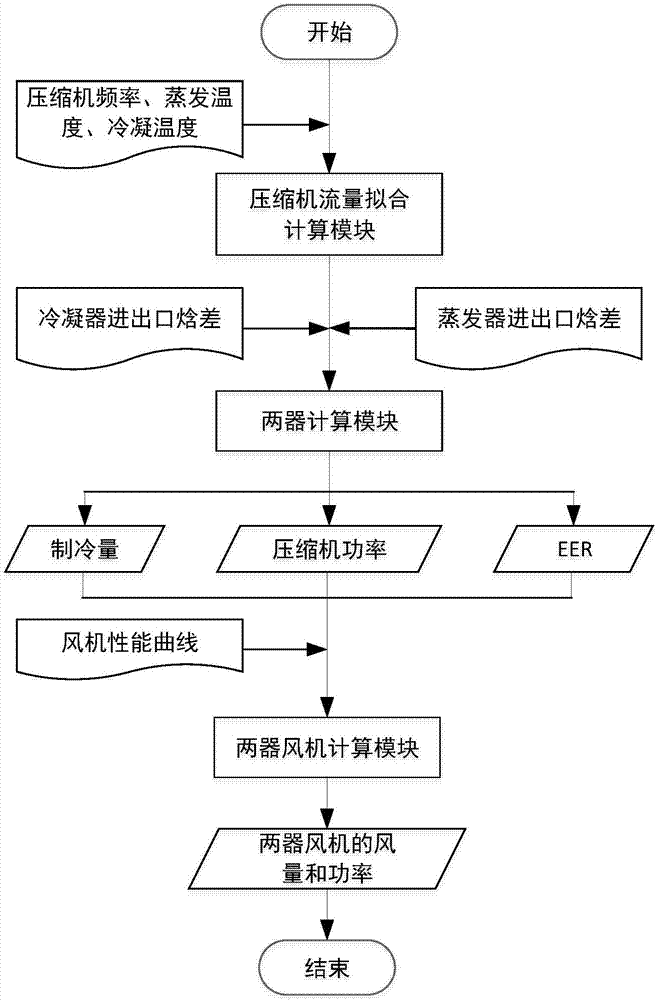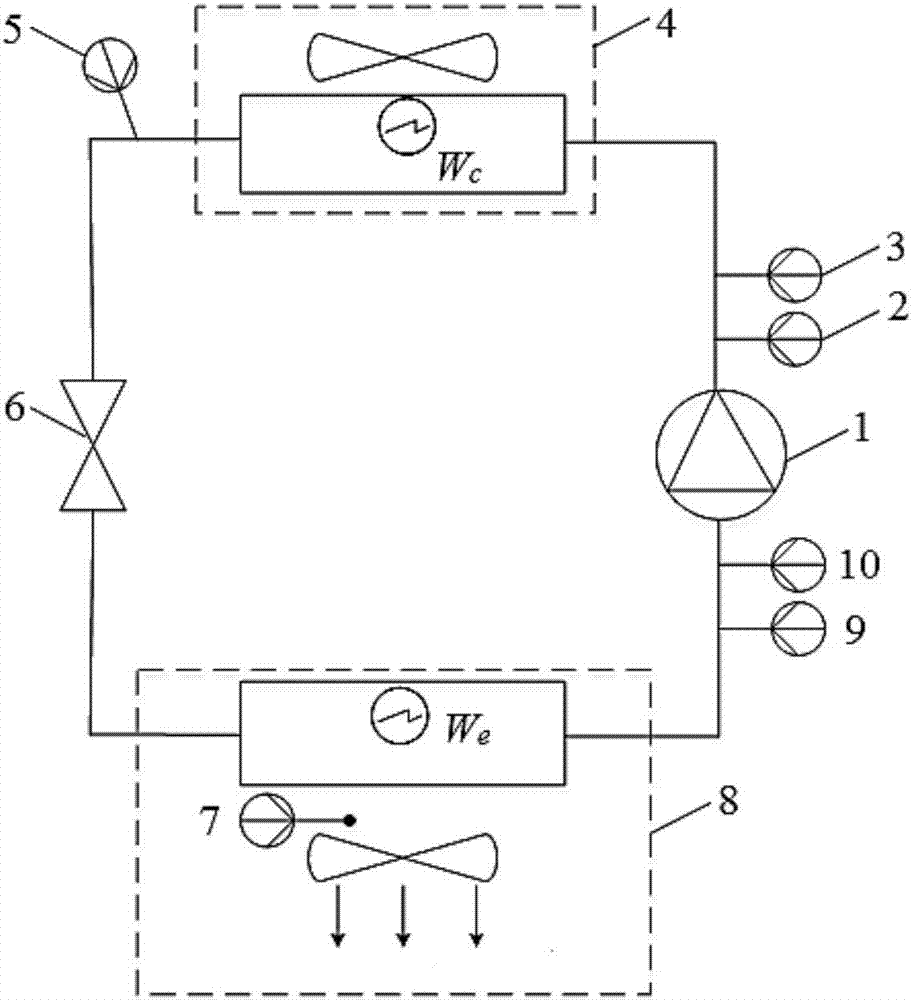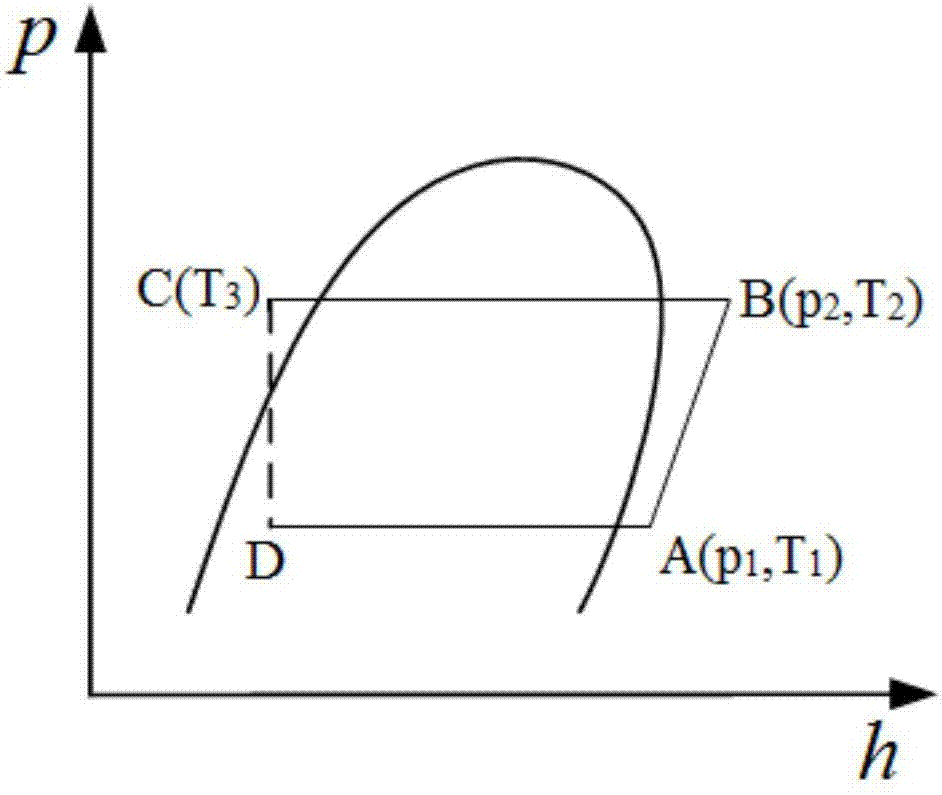Limited measuring point based air conditioning system performance online detection method
A technology of an air conditioning system and a detection method, which is applied to heating and ventilation control systems, heating and ventilation safety systems, heating methods, etc. Effect
- Summary
- Abstract
- Description
- Claims
- Application Information
AI Technical Summary
Problems solved by technology
Method used
Image
Examples
Embodiment Construction
[0032] Such as figure 1 As shown, this embodiment includes the following steps:
[0033] Step 1. Arrange measuring points in the running air-conditioning system, and record the parameters of the measuring points in real time.
[0034] Such as figure 2 As shown, the arrangement of measuring points refers to the arrangement of compressor discharge temperature measurement points and compressor discharge pressure measurement points between the compressor and condenser of the air-conditioning system to obtain the compressor discharge temperature parameter T 0 and exhaust pressure parameter p 0 ; Arrange liquid pipe temperature measuring points at the outlet of the condenser liquid pipe to obtain the liquid pipe temperature parameter T 2 ; Arrange compressor suction temperature measuring points and compressor suction pressure measuring points between the evaporator and compressor to obtain the compressor suction temperature parameter T 1 and the inspiratory pressure parameter p...
PUM
 Login to View More
Login to View More Abstract
Description
Claims
Application Information
 Login to View More
Login to View More - R&D
- Intellectual Property
- Life Sciences
- Materials
- Tech Scout
- Unparalleled Data Quality
- Higher Quality Content
- 60% Fewer Hallucinations
Browse by: Latest US Patents, China's latest patents, Technical Efficacy Thesaurus, Application Domain, Technology Topic, Popular Technical Reports.
© 2025 PatSnap. All rights reserved.Legal|Privacy policy|Modern Slavery Act Transparency Statement|Sitemap|About US| Contact US: help@patsnap.com



